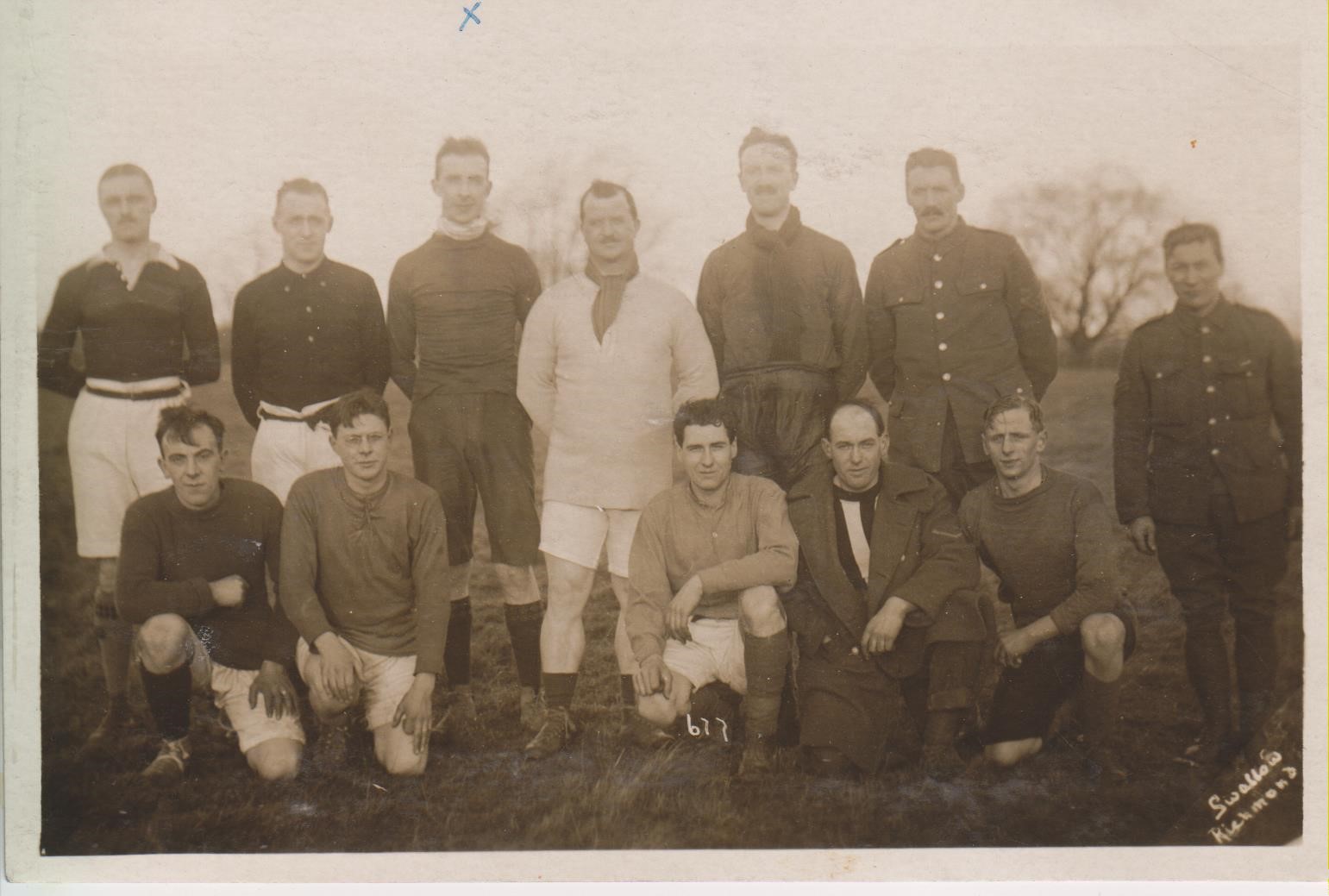
Mrs Drury of Richmond visited the museum to tell us about Jack Morley, her great uncle.
Jack Morley was one of nine children of a hill farmer in Weardale, County Durham and a keen athlete. In 1914 he lived in Toronto, Canada whither he had emigrated and worked as a cabinet maker. When war broke out he returned to England, to his mother’s great joy, to join up in the Durham Light Infantry. One of his five brothers was Customs and Exciseman for Swaledale and Wensleydale, based in Richmond, near Catterick Camp where Jack did some training. Jack would ride over to Richmond to visit and would tie up his horse in the garden to the great delight of his nieces!
Jack served in the 1915-1917 Salonica Campaign in northern Greece, at the time that city was badly burned. Jack organized the transport of supplies, mainly by mules through the hills up to the Struma Front. His height was 6’3” and together with his high-heeled riding boots and his high officer’s helmet, he made a commanding figure in securing the co-operation of the locals! In his time off he enjoyed shooting in the nearby Vardar Estuary marshes and brought home fine striped woollen socks run through with silver thread. The stamps from the postcards he sent home are still in a family stamp collection.

Explore more memories from the ribbon
-
2nd Lt W Buckle
Information submitted by Mark Tovey, William Buckle is Mark’s wife’s great uncle. William Buckle was born in Middlesbrough. In 1914 he was a 21-year-old clerk working for a well-known Middlesbrough steel company. The war was 4 weeks old when he, like many other young men from North Yorkshire, went to Northallerton to join their local Territorial Army Battalion – 4th Battalion, The Yorkshire Regiment (4th Green Howards). On 16 April 1915, 4th Green Howards were ordered to Belgium. On 22nd April the German Fourth Army attacked the Allied front line in the North of the Ypres Salient and, using poison gas for the first time, threatened Ypres itself. This was a crisis and, despite their inexperience, 4th Green Howards went straight to the fight. For the next month the Yorkshiremen were in almost continual action, suffering many casualties. Private William Buckle was one of the Battalion’s 200 casualties. He had been shot twice, in the right shoulder and hip. He spent the next 2 months recovering before, as a corporal, training Green Howard recruits in Northallerton. Surprisingly, after his wounds healed, he volunteered for one of the most dangerous jobs in the Army – as a platoon commander. After a 4½ month course at an Officer Cadet Battalion at Denham, Buckinghamshire, Buckle was granted a commission as a Temporary Second Lieutenant in July 1916. The following month he was posted to 8th Green Howards. Buckle served on the Somme through the fierce battles of that summer and autumn until his…
-
James McAndrew
Deborah Hutchinson sent us this information about her Great Uncle, 459480 Driver James McAndrew, 450th Field Company, Royal Engineers. James was the oldest boy in a family of 9 – 3 girls and 6 boys much admired by his brothers and sisters, especially by his youngest sister Kitty – her grandmother. Born 1898 in Chester-le-Street, James moved with his family to 11 Mary Agnes Street, Coxlodge, Newcastle upon Tyne in 1901. When he left school he worked as a coal miner in Regent’s Pit, Gosforth along with most of the community. In 1914 he enlisted and joined the Royal Engineers as a driver. He was part of the Mesopotamian Expeditionary Force. He was one of the many non-battle casualties in the area due to the extreme weather and unhygienic conditions. He died of yellow fever on 10th October 1918 at the age of 22 – just a month and a day before the Armistice – it was also his mother’s birthday. He is buried in Amara War Cemetery in Baghdad, Iraq. His name appears on the War memorial in St Charles RC Church, Gosforth. His parents, Thomas and Liza, had been active fund raisers to build this church when they arrived in the area in 1901.
-
Fred Shaw
Fred, the fourth child of five to Ned and Ann Shaw, was born around 1884 at Slaithwaite near Huddersfield. His father Ned was a railway signal man and part time photographer. Two of Fred’s brothers would emigrate to Canada before the Great War began. Fred trained as a journeyman tailor and travelled to seek employment. Whilst in the Hawes district he met and married a girl from Hawes, Mary Elizabeth Blades, in November 1909. Fred enlisted in Hawes in June 1916, joining the 9th Battalion Yorkshire Regiment. Fred went to France in September 1916. Private Fred Shaw was killed on the first day of The Battle of Messines on the 7th June 1917 aged 33. Fred’s body was never found and his name is commemorated on the Menin Gate at Ypres. Sadly, just four and a half months after his father died, their son Jimmy died aged 5.
